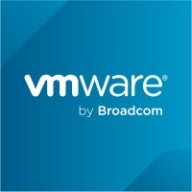

IBM Security QRadar and VMware Carbon Black Cloud compete in the cybersecurity sector, with different strengths. IBM Security QRadar seems to have the upper hand in integration and customization capabilities, while VMware Carbon Black Cloud excels in endpoint security due to its real-time protection.
Features:IBM Security QRadar is noted for its scalability, ease of data extraction, and emphasis on compliance reporting. It offers robust integration capabilities and allows for customization to fit specific enterprise needs. VMware Carbon Black Cloud, on the other hand, is distinguished by its real-time protection, and lightweight design, offering excellent threat-hunting capabilities tailored for endpoint security.
Room for Improvement:IBM Security QRadar could improve its incident management, analytics, rule creation, and address its user interface complexity and integration challenges. VMware Carbon Black Cloud should focus on enhancing its cloud console, multi-tenancy support, and improving technical support in areas outside its core markets.
Ease of Deployment and Customer Service:IBM Security QRadar offers various deployment configurations like on-premises and hybrid cloud setups but requires skilled personnel due to its complexity; its technical support experiences vary. VMware Carbon Black Cloud also supports diverse deployment options and is praised for its technical support, though it needs better global availability.
Pricing and ROI:IBM Security QRadar is pricey, with costs based on EPS and deployment complexity, but users still see positive ROI due to its comprehensive features. VMware Carbon Black Cloud is also regarded as expensive, which might deter smaller businesses, yet it offers good value because of its threat mitigation capabilities and straightforward cost model.
With SOAR, the workflow takes one minute or less to complete the analysis.
AWS gives the chance to implement a solution out of the box with use cases that are already in IBM Security QRadar.
Investing this amount was very much worth it for my organization.
They assist with advanced issues, such as hardware or other problems, that are not part of standard operations.
Support needs to understand the issue first, then escalate it to the engineering team.
The support is really good; for instance, if a critical ticket is submitted, you will get paged right away as it gets logged, and their analyst will look into it, letting you know as soon as possible so you can work on it.
For EPS license, if you increase or exceed the EPS license, you cannot receive events.
I think QRadar is stable and currently satisfies my needs.
The product has been stable so far.
We receive logs from different types of devices and need a way to correlate them effectively.
If AI-related support can suggest rules and integrate with existing security devices like MD, IPS, this SIM can create more relevant rules.
IBM Security QRadar does not support Canvas, so we had to create custom scripts and workarounds to pull logs from Canvas.
I recall we couldn't upgrade because the sensor was not compatible, and the latest VMware Carbon Black Cloud version was not compatible with the latest Red Hat version.
Splunk is more expensive than IBM Security QRadar.
It was costly mainly because of the value you can get right now compared to other solutions.
It depends on how much you want to spend.
Recently, I faced an incident, a cyber incident, and it was detected in real time.
IBM Security QRadar gives the opportunity to improve the time to market of the releases with a great evaluation of cybersecurity breaches.
IBM is seeking information about IBM QRadar because a part of QRadar, especially in the cloud, has been sold to Palo Alto.
| Product | Market Share (%) |
|---|---|
| IBM Security QRadar | 1.4% |
| VMware Carbon Black Cloud | 0.2% |
| Other | 98.4% |


| Company Size | Count |
|---|---|
| Small Business | 90 |
| Midsize Enterprise | 36 |
| Large Enterprise | 103 |
| Company Size | Count |
|---|---|
| Small Business | 5 |
| Midsize Enterprise | 4 |
| Large Enterprise | 8 |
IBM Security QRadar (recently acquired by Palo Alto Networks) is a security and analytics platform designed to defend against threats and scale security operations. This is done through integrated visibility, investigation, detection, and response. QRadar empowers security groups with actionable insights into high-priority threats by providing visibility into enterprise security data. Through centralized visibility, security teams and analysts can determine their security stance, which areas pose a potential threat, and which areas are critical. This will help streamline workflows by eliminating the need to pivot between tools.
IBM Security QRadar is built to address a wide range of security issues and can be easily scaled with minimal customization effort required. As data is ingested, QRadar administers automated, real-time security intelligence to swiftly and precisely discover and prioritize threats. The platform will issue alerts with actionable, rich context into developing threats. Security teams and analysts can then rapidly respond to minimize the attackers' strike. The solution will provide a complete view of activity in both cloud-based and on-premise environments as a large amount of data is ingested throughout the enterprise. Additionally, QRadar’s anomaly detection intelligence enables security teams to identify any user behavior changes that could be indicators of potential threats.
IBM QRadar Log Manager
To better help organizations protect themselves against potential security threats, attacks, and breaches, IBM QRadar Log Manager gathers, analyzes, preserves, and reports on security log events using QRadar Sense Analytics. All operating systems and applications, servers, devices, and applications are converted into searchable and actionable intelligent data. QRadar Log Manager then helps organizations meet compliance reporting and monitoring requirements, which can be further upgraded to QRadar SIEM for a more superior level of threat protection.
Some of QRadar Log Manager’s key features include:
Reviews from Real Users
IBM Security QRadar is a solution of choice among users because it provides a complete solution for security teams by integrating network analysis, log management, user behavior analytics, threat intelligence, and AI-powered investigations into a single solution. Users particularly like having a single window into their network and its ability to be used for larger enterprises.
Simon T., a cyber security services operations manager at an aerospace/defense firm, notes, "The most valuable thing about QRadar is that you have a single window into your network, SIEM, network flows, and risk management of your assets. If you use Splunk, for instance, then you still need a full packet capture solution, whereas the full packet capture solution is integrated within QRadar. Its application ecosystem makes it very powerful in terms of doing analysis."
A management executive at a security firm says, "What we like about QRadar and the models that IBM has, is it can go from a small-to-medium enterprise to a larger organization, and it gives you the same value."
Fortify Endpoint and Workload Protection
Legacy approaches fall short as cybercriminals update tactics and obscure their actions. Get advanced cybersecurity fueled by behavioral analytics to spot minor fluctuations and adapt in response.
Recognize New Threats
Analyze attackers’ behavior patterns to detect and stop never-before-seen attacks with continuous endpoint activity data monitoring. Don’t get stuck analyzing only what’s worked in the past.
Simplify Your Security Stack
Streamline the response to potential incidents with a unified endpoint agent and console. Minimize downtime responding to incidents and return critical CPU cycles back to the business.
We monitor all Endpoint Detection and Response (EDR) reviews to prevent fraudulent reviews and keep review quality high. We do not post reviews by company employees or direct competitors. We validate each review for authenticity via cross-reference with LinkedIn, and personal follow-up with the reviewer when necessary.